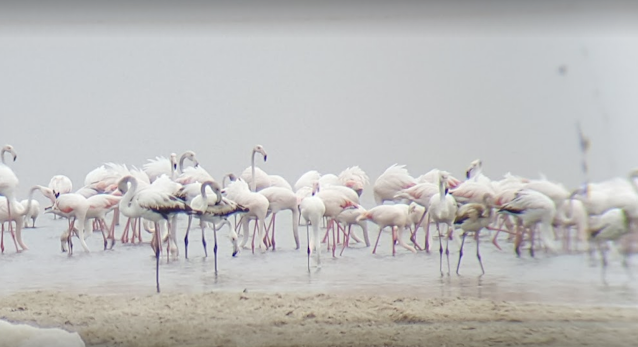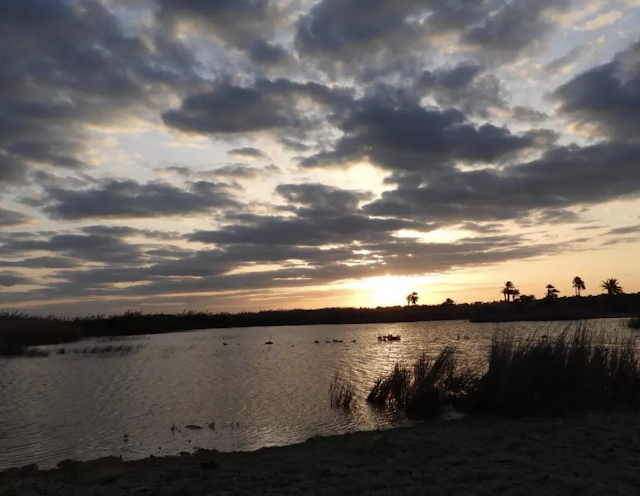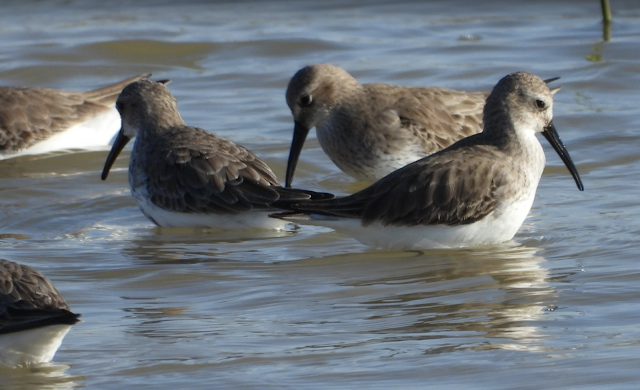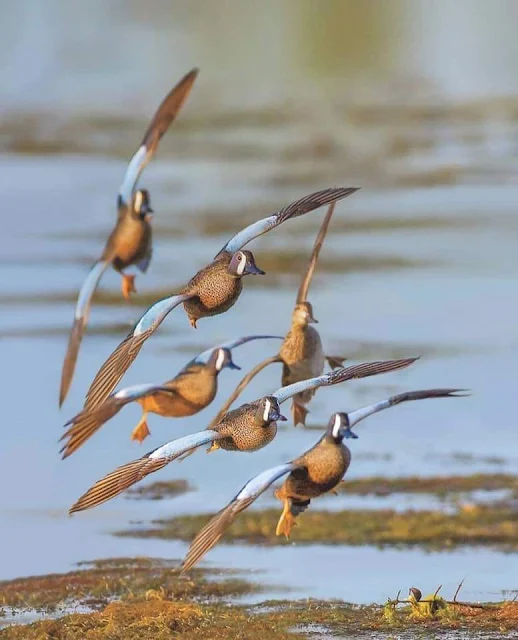When the Sky Comes Alive
Imagine standing at the edge of a lake at sunset. The air is still, the water glimmers gold… and then, out of nowhere, a black cloud forms above you — not smoke, but thousands of starlings moving as one, twisting and folding into living shapes. Your heart skips a beat. This is a bird murmuration — nature’s most breathtaking aerial performance.
This guide will take you through everything you need to know about bird watching and murmurations:
What they are and why they happen
Where and when to see them (including hidden gems like Egypt’s Fayoum Oasis)
How to start bird watching, even with no equipment
Tips for photographing these spectacles without disturbing nature
Whether you’re a beginner or a seasoned birder, you’ll come away knowing how to experience and protect this wonder of the natural world.
What Is Bird Watching?
Bird watching (also called birding) is the observation of wild birds in their natural habitats for enjoyment, research, or conservation.
It’s more than just “looking at birds.” It’s about slowing down, paying attention, and noticing details — a flash of red wings, a song you haven’t heard before, the way a heron stands perfectly still before striking.
Why People Fall in Love with Bird Watching
Connection with nature — You start noticing seasonal changes, migration patterns, and weather shifts.
Low-cost hobby — Your eyes and ears are enough to start.
Community — Bird watchers often share sightings and tips online or in local clubs.
Citizen science — Many birders contribute to research via apps like eBird.
Bird Watching in Fayoum
Egypt’s Fayoum Oasis is one of the most rewarding places in the Middle East for birding.
Lake Qarun attracts flamingos, herons, and rare migratory species.
Wadi El Rayan is known for water birds like kingfishers and ospreys.
Winter months bring massive flocks — sometimes leading to murmuration events.
What Is a Bird Murmuration?
A murmuration is when large flocks of birds, often starlings, fly together in coordinated, wave-like patterns that shift shape in the sky.
These shapes can look like rolling clouds, giant ribbons, or smoke moving against the wind — except each “particle” is a bird, perfectly in sync.
Why Do Birds Murmurate?
Scientists believe murmurations happen for:
Predator protection — The constantly shifting shapes confuse hawks and falcons.
Warmth — Birds gather before roosting to share body heat.
Information sharing — They may communicate about food sources or safe roosting sites.
Not Just Starlings
While starlings are the classic murmuration stars, other birds display similar coordinated patterns:
Red-winged blackbirds
Knots and dunlins (shorebirds)
European golden plovers
Even flamingos (though slower and less “fluid” than starlings)
When and Where to See Murmurations?
The best time to see murmurations is from late autumn to early spring, at dusk, near open fields, wetlands, or lakes.
Global Murmuration Hotspots
Fayoum Oasis, Egypt — Lake Qarun and surrounding wetlands in winter.
Somerset Levels, UK — Hundreds of thousands of starlings.
Rome, Italy — Famous for dusk murmurations over the Tiber.
Black Sun, Denmark — Possibly the largest murmuration site in the world.
Sacramento Valley, USA — Huge blackbird and starling formations.
Timing Is Everything
Season: Late October to March.
Time of Day: Around sunset.
Weather: Calm, cool evenings without strong wind.
The Science Behind Murmurations
A murmuration looks choreographed, but there’s no leader. It’s physics and biology working together.
The “Rules” Birds Follow
Researchers have found that each bird:
Keeps a set distance from its nearest neighbors.
Matches their speed and direction.
Moves toward the average position of the group.
When thousands of birds do this at once, the shapes ripple like liquid.
Criticality in Physics
Murmurations operate at a “critical point,” meaning a single bird’s movement instantly ripples through the flock. This allows incredibly fast, coordinated turns — a survival advantage against predators.
How to Start Bird Watching
You can start bird watching by choosing a location, watching quietly, and learning to identify birds by sight and sound.
Essential Gear
Binoculars: 8×42 is a good all-round size.
Field Guide/App: Merlin Bird ID, eBird.
Notebook: For sketches and notes.
Neutral Clothing: Helps you blend into the environment.
Skills to Practice
Learn to stay still for long periods.
Listen for bird calls before looking.
Notice flight patterns and feeding behavior.
Photographing a Murmuration
Capturing a murmuration is challenging but rewarding.
Camera Tips
Lens: Telephoto (200mm or more).
Shutter Speed: 1/1000 or faster.
ISO: Adjust for low-light conditions.
Mode: Continuous burst shooting.
Composition Tips
Frame the murmuration against sunset colors for drama.
Use silhouettes for an artistic effect.
Include a landmark (tree, lake, building) for scale.
Ethical Bird Watching
Ethical bird watching means observing birds without disturbing their natural behavior or habitats.
Do’s
Keep your distance.
Stay quiet and patient.
Support local conservation groups.
Don’ts
Never use drones near birds.
Avoid flash photography at night.
Don’t feed wild birds during migration season.
Health Benefits of Bird Watching
Bird watching is good for your mind and body.
Mental Health
Reduces anxiety and depression.
Encourages mindfulness.
Physical Health
Increases walking and time outdoors.
Improves cardiovascular health.
FAQs About Murmurations and Bird Watching
Q: Are murmurations rare?
A: They’re seasonal, so you need the right timing and location.
Q: Can any flock be called a murmuration?
A: No — only large, synchronized flocks moving in wave-like patterns.
Q: What’s the largest murmuration recorded?
A: Some have reached millions of birds, like the “Black Sun” in Denmark.
Bird watching and murmurations are proof that nature can still surprise us in the most beautiful ways. The fact that thousands of individuals can move as one — without a leader — is a reminder of nature’s quiet intelligence.
So the next time you’re by a lake, in a field, or even in the city at sunset… look up. You might just witness the sky dancing.
🌿 Ready to See It for Yourself? Let Fayoum Travel Guide help you experience the magic of bird watching and murmuration over Lake Qarun.
📩 Book your bird watching tour today and step into nature’s living symphony. Visit Fayoum Travel Guide to plan your trip.













